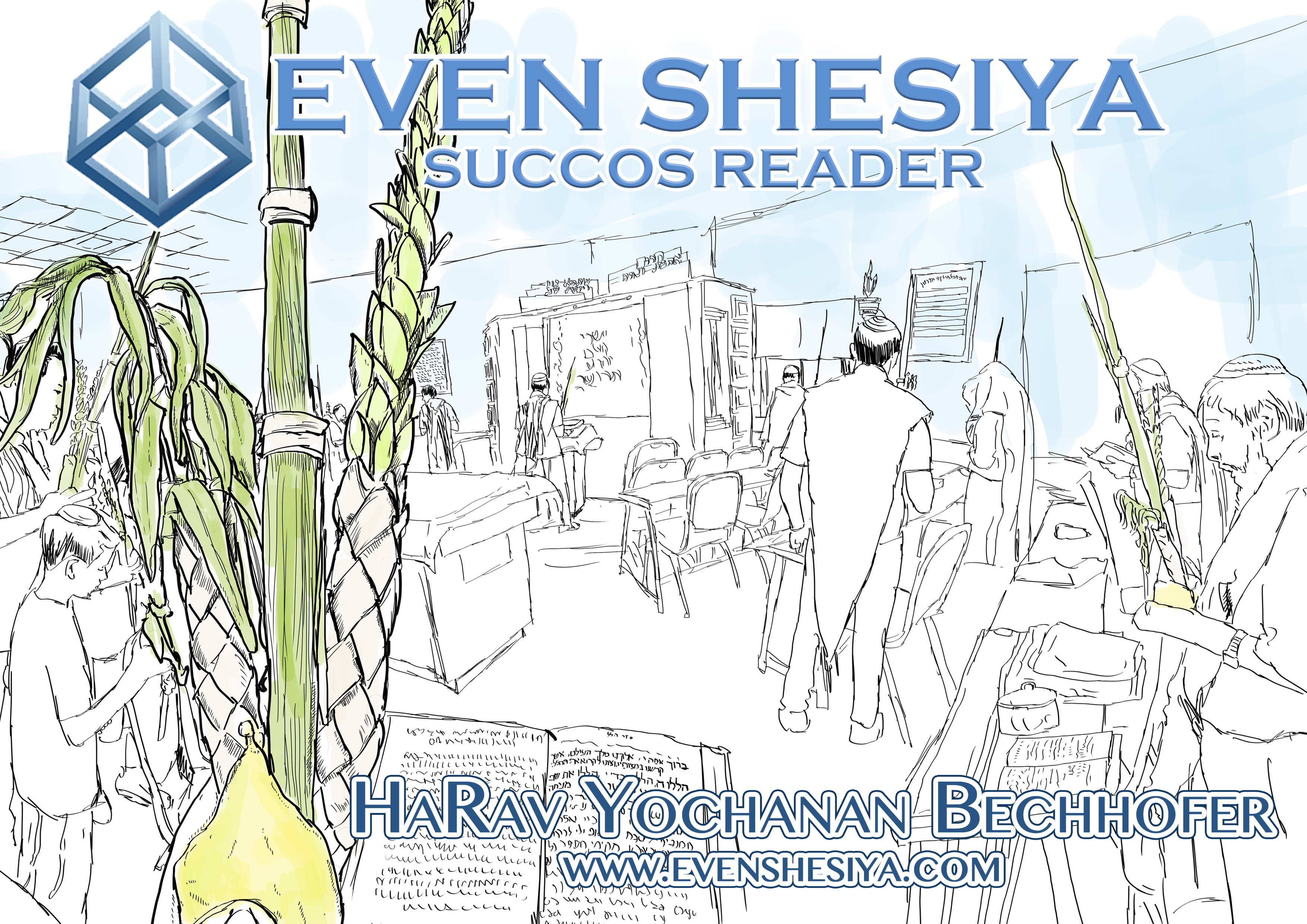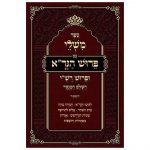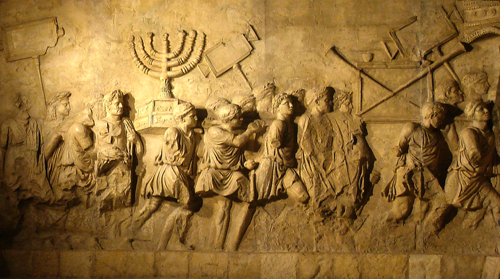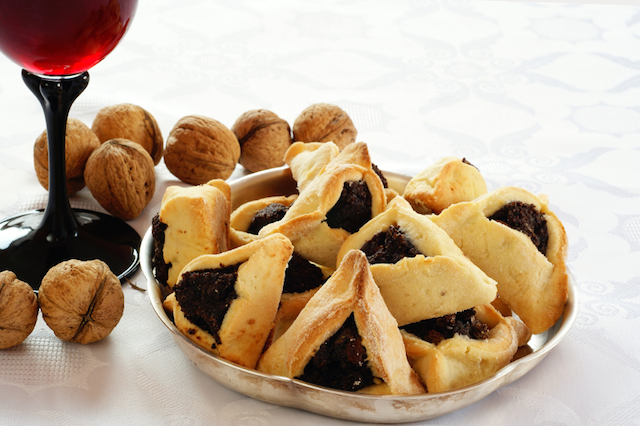Click here to download PDF (for single sided printers)
Click here to download PDF (double sided)
Between Yom Kippur & Succos
Forgiven in Thirds
To understand the special energy of these days between Yom Kippur and Succos: The midrash Rabbah in parshas Emor (30:7) on the Pasuk “And you will take for Yourselves on the first day a fruit of a citrus tree (Esrog)….. etc” raises the question, it’s not the “first day” it’s the 15th of Tishrei! Why is it called “the first day”? The midrash gives a parable: A province owed its King a great deal of taxes. The King was on his way to collect those taxes. When he came within 10 miles of the province, the leaders of the province came out and gave him praise so he discounted 1/3 of the debt. When he came within 5 miles of the province, the middle class citizens came out and gave him praise and he discounted another third of the debt. Once he entered the province itself all the people of the province, men, women, and children came out in praise him and he then discounted the balance and he told them: “whatever was – was! From here we start a new account.” So also on Erev Rosh Hashanah the leaders of the generation fast and Hashem forgives 1/3 of our sins. Between Rosh Hashanah and Yom Kippur there are special individuals who also fast and Hashem forgives the Jewish people another third of their sins. On Yom Kippur everyone fasts, men, women, and children and Hashem tell the Jewish people: “whatever was – was! From here we start a new account.” The Midrash continues “And from Yom Kippur until Succos all of the Jewish people are busy with Mitzvos this one is busy with his Succah and this one is busy with his Lulav and on the first day of Yom Tov of Succos (which is the 15th of Tishrei) all of the Jewish people stand before Hashem with their Lulav and Esrog for the sake of Hashem and Hashem says whatever was – was! From here we begin a new account (and therefore it’s “the first day” of the new account) and therefore Moshe encourages us “Take for yourselves on the first day…” There is a contradiction here within this midrash. It already said that after Yom Kippur Hashem says everything is forgiven let’s begin a new account and then The Midrash repeats itself that “on the first day of Succos Hashem says whatever was – was! From here begins a new account”. Does the new account start after Yom Kippur or does the new account start on Succos?
No Accounting in Love
The idea of an account is related to “Din” – law & Justice. What’s earned, what’s deserved, and what punishment is warranted are all questions of “Din”. In love there is no accounting. There is a classic example of this that has very much to do with the judgment that we just had on Rosh Hashanah. Chazal tell us that how much livelihood we’re going to have is set from Rosh Hashana to the next Rosh Hashanah with the exception of what we spend on learning Torah and expenses for Shabbos and Yom Tov – in those cases the more we spend the more we get back (Beitza 16A). Spending “more” shows love of the Torah and love of Shabbos and Yom Tov – love is beyond accounting and therefore the account is not depleted. Accounting belongs to the realm of judgment with love we break out of the parameters which are drawn by law & Justice. The same is also true regarding our being vindicated and exonerated. It is true that by the time Yom Kippur is over we have put out enough “praise” which was in form of the fasting that was done as atonement. Atonement is “measure for measure”! We enjoyed sin so we made up for it by afflicting ourselves and we “paid off the account” with the “praise” we gave to the king which was in a form of our affliction, which was taking on pain to offset the forbidden pleasure. The account is clean, even though it’s called a kindness on the part of the king, there’s definitely an element of Justice, because we did our part, our affliction to show regret is the “praise” that He graciously accepted as payment.
Obsessed
Then there’s these days between Yom Kippur and Succos with we’re just totally obsessed with mitzvos. In five short days between a 24-hour fast and Succos we have to arrange so many mitzvos. This obsession with Mitzvos is the obsession of love like the pasuk says; “ and in her love (the Torah) he is totally obsessed” (Mishlei 5:19). During these days there cannot be any accounting because in love there is no accounting. We’re showing our love for Hashem by being obsessed with his Mitzvos. The new account cannot start when it’s a time of Love. Now is a time similar to he who spends greatly on Torah learning and on the expenses of Shabbos and Yom Tov.
Teshuva M’Ahava
This is not just to defer starting the accounting. It’s deeper than that. On Yom Kippur we did Teshuva mainly out of fear. We were in the realm of ‘settling up’ with Hashem’s Justice and the afflictions were graciously accepted as penance. We still have to do Teshuva out of love. It’s not merely a deferment, Hashem is making a new statement on Succos: now is when we’ll start from, not just because the account was deferred, but because we’ve attained a whole new higher-level – we’ve demonstrated Teshuva out of love for Hashem and Mitzvos.
The Succah & Lulav
The Succah
“The ideas behind Succah and Lulav are as follows: The clouds of Divine Glory that surrounded the Jewish people in the desert had multiple functions. Asides from the physical benefits to give them shade and protection, there was also a great spiritual effect upon them. Just like that these clouds separated the Jewish people from the hazardous environment of the desert, so also spiritually there was a spiritual light that put them on a unique spiritual plateau, separate from all the other nations, above and beyond the whole reality of this world. They were truly on a plane above all the other nations of the world. This was done at the time for the benefit of the Jewish people to bring them to the high level that they needed to attain and this continues to affect each and every Jew in every generation. There is a light of Holiness from Hashem that surrounds every Jewish Tzadik that truly separates him from all other human beings and puts him on a higher plane above them all. This general concept is renewed for all the Jewish people on the holiday of Succos through the Succah” (Ramchal, Derech Hashem 4:8:2)
Bitachon
The words of the Ramchal are very meaningful, even at their face value. It is befitting to analyze the details that the Succah is about being enveloped and surrounded by Divine Light – which means the Succah carries you. The state where you are carried and you don’t carry yourself is when things are beyond you. That’s when you need be “Bitachon”- faith and trust in Hashem. That was the Jewish people’s constant struggle in the desert, to be trusting that everything is truly being taken care of. For a people who stuck with it for 40 years it could be said that they exhibited faith and trust faith despite whatever setbacks there were as the prophet says centuries later: “I remember the kindness of your youth the love that you showed me like a bride, how you followed me into the desert to an unplanted land” (Yirmiyahu 2:2). This remains the function of the Succah, the lesson of trust that Hashem carries you when you cannot carry yourself. This is actually crucial to what the Ramchal repeatedly stresses that the Succah sets us apart from the nations of the world. This will be further explained in the entry on Shabbos Chol HaMoed.
The Four Minim
The Ramchal continues: “A light from Hashem shines on the heads of the Jewish people and adorns them like a crown in a manner that fear of Jewish people befall all their enemies. This is accomplished by taking the Lulav and the other three species and this fulfills the verse “and all the nations world will see the name of Hashem is called upon you and will fear you” (Devarim 28:10) this could be visibly perceived if not for the sins that bar the flesh eyes from seeing it(!) but there are particular times where this power comes out into greater actuality and that is through the details of the Lulav and the other species in how we shake them and make rounds with them complete this objective to have the Divine Name firmly rest on the Jewish people. This causes their enemies to fall before them and the nation surrender are subjugated under the Jewish people to the point that the Nations will actually choose to be slaves to the Jewish people, as the Navi says: “they will bow down before you” (yishayahu 49:23) “and come over to you bent over all those who used to oppress you” (Yishayahu 60:14). Because everyone will subjugate themselves and bow to the Jewish people so as they can try to siphon from the Jewish people a little bit of the Divine light that dwells upon them. At that time when this goes into full actuality all the pride of the gentiles will be push down and they will surrender to the Jewish people and through that all mankind will come to serve Hashem and this is the central idea behind Lulav and its details like we mentioned” (Ramchal Derech Hashem 4:8:2)
Internalized Light
The Ramchal is telling us that Lulav and the other three species are not the light that surrounds us, rather it is the light that penetrates inside of us and becomes one with us to the point that we are perceived as Superior heavenly beings to the eyes of the nations of the world. This is not surrounding light of Succah, this is internalized light! With this we could readily understand the famous Midrash Rabbah that describes how the four species are parallel to the human form and are fulfillment of “all my bones will say Hashem who is like you” (Tehillim 35:10) as the Lulav is like the spine, the Hadassim are like the eyes, Aravos are like the lips, and the Esrog is like the heart. The 4 minim represent how the Jewish people absorb the Divine Name and the Divine Name is truly one with them, even the nations of the world would be able to see it if not for their sins and in the future they will see it and will bow to the Jewish people.
Victory Trophy
This also explains the famous midrash that no one knows who won in our Rosh Hashana court case against the prosecution of the ministering angels of the nations the world. The judgment that was passed upon us between Rosh Hashanah and Yom Kippur was a ‘closed-door trial’ hidden from the eyes of the inhabitants of Earth. When the Jewish people go out on the first day of Succos with their Lulavim and other three minim, everyone knows the Jewish people won. This Midrash reflects the same idea: Hashem’s Name gets visibly internalized and fused with our being with the 4 minim and that’s why as we shake in all the different directions it’s like shooting off shots against all our enemies and when we walk around the Bima by the Hoshanos, we shout Hoshana – save us! But it isn’t “save us” in the sense of a protective cover but rather “save us” in the sense that we should be victorious and we should triumph over our enemies! Bringing out the four minim is the full actualization of everything we davened for on Rosh Hashanah (see Rosh Hashana reader entry “Ata Kadosh/Malchiyos”)
Shabbos – Succos
BUILD THE WALL!
Getting support for the Wall
On Shabbos of Succos we have an interesting Halacha of “Migu d’havei dofen linyan Shabbos havei dofen linyan Succah – Migu d’havei dofen linyan Succah havei dofen linyan Shabbos” -although the criteria for a valid “wall” to make it a “Reshus HaYachid”-private domain where one can carry on Shabbos is different from the criteria of what constitutes a “wall” for a kosher Succah but when the two holidays intersect, Shabbos and Succos, what is a valid wall for Shabbos vis-à-vis being able to carry in a private domain will be a valid wall for Succah and what is a valid wall only for Succah will still make the Succah a “Reshus HaYachid”-private domain where one could carry on Shabbos. If these two ideas to supplement each other then there must be a commonality between Succah and Shabbos! What is it?
Lulav vs Succah
On Shabbos-Succos we don’t have Lulav and Esrog, but we have Succah. What’s the difference? We don’t have Lulav and Esrog because you might carry it in the public domain. With Succah that problem doesn’t exist -you don’t carry it – rather it itself a place. Succah is its own place. When we are in Succah we are in holy space. The Succah represents this world as connected to the spiritual dimensions.
Width of the Succah
The minimal requirements for walls of the Succah are two full length walls that are perpendicular and then one small wall that’s distanced less than three “tefachim” from one of the walls – it looks like the letter “Heh” representing that this world was created with the letter “Heh”! The minimal length of the full-length walls is seven “tefachim” – representing “nature” and that the world in general was created in seven days.
Height of the Succah
The height of the Succah walls are ten “tefachim” representing that the “Divine presence has never come beneath ten “tefachim”. The height of the walls of the Succah allude to reaching the higher world that was created with the letter “Yud” which has a numerical value of ten – hence the “Ten tefachim of height”! The width-span of the Succah looks like the letter “Heh” and the height of the Succah alludes to the letter “Yud” spelling out the Divine name of “Yud-Heh” with which all realms were created, and this is what Chazal allude to when they say: “the Divine Name dwells on the Succah”
Area of the walls of Succah
The minimal area for any of the full walls of the Succah is 7 x 10 “tefachim”. Every wall has two sides to it: the inside side of the wall and the outside side of the wall. The 70 square “tefachim” of the inside of the wall represents our own (=in our domain) “70 faces of Torah”. The 70 square “tefachim” on the outside of the wall represents that it’s blocking out the 70 nations of the world! As the Pasuk says (Vayikra 23:42): “…..every citizen of Yisroel shall sit in the succahs”. The Zohar explains that only one who is truly Jewish sits in Succah! When a goy visits you in your Succah –he’s not really in the Succah! The Holy space created in the confines of the Succah is only for the Jewish people!
Can’t take the Holy Heat – Get out of the Succah!
This is the depth of what the Gemara says that at the end of time the goyim are going to demand from Hashem to give them a mitzvah – and Hashem says: “sit in Succah”. Hashem will make it hot and they leave the Succah, seemingly justifiably so. But they kick the Succah on the way out! They are rejecting this space which they found frustrating and disconcerting – because they were in “Jewish space”! If they thought they “belonged” they wouldn’t kick- they would leave calmly, wait for it to cool down, and come back in! Goyim just don’t belong in Succahs…..
Shabbos vs Yom Tov
Goyim may not make their own religious festivals, but they may imitate our Yomim Tovim. There are two exceptions they cannot keep Shabbos or learn Torah! (rambam Hilchos Melachim 10:9-10). Shabbos, like the Torah itself, is uniquely Jewish, special presents Hashem gave the Jewish people. That is the secret that “all admit that on Shabbos the Torah was given”. Shabbos has is not just a time – it is “Holy space”. As the Pasuk says (Shemos 16:29): “…..no man shall leave his place on the seventh day”. That is the secret that on Shabbos, as opposed to Yom Tov, there is a prohibition of carrying in the public domain! Yom Tov is “open to the public” and that is reflected by being allowed to carry in the public domain – it’s only “Half for Hashem” – the other half which is “ours” for indulging is the basis for being allowed to carry (=”Mtoch” – this is even more certainly true according to the opinion that there inherently is no prohibition to carry on Yom Tov), that’s why goyim could also practice our Yomim Tovim. On Shabbos we must be only in Hashem is domain, we must not be in the public domain that’s open to goyim and therefore, by the same token, they cannot keep Shabbos- it’s trespassing!!
Shabbos & Succah – Exclusive Holy Space
Succah and Shabbos have the common denominator of being exclusively Jewish space! Shabbos and the walls of the Succah, whose inside is TORAH and keeps the 70 nations on the outside, create a partition of “inner Jewish space” versus “outer goy space”. That is the secret that these two supplements each other what would be a good “wall” for Shabbos purposes on Shabbos could complete the Succah and what is a good “wall” for the Succah on Shabbos Succos the Succah is a “Reshus HaYachid” (lit. singular domain – alluding to “The Domain of He who is ONE!) They reinforce each other in separating us from the goyim and putting us in “Hashem’s Space”
Hoshanah Rabbah
Pure and Simple
The day of Hoshanah Rabbah is the day of our “Great Salvation”. On this day the judgment process which has begun on Rosh Hashanah is complete – we have successfully traversed the prosecution of the ministering angels representing the other nations, and we have been vindicated.
Earlier, the ideas behind the mitzvah of sitting in the succah and shaking the Lulav were contrasted. To summarize: succah represents faith, whereas taking the four species represents the power of our performance of mitzvos. It is in the latter area is where there is competition between us and the other nations, as they have the seven mitzvos. They too have the ability to accomplish.
This is what still remains to be clarified: that our deeds are inherently superior to theirs. It is true that we have shown to be superior in our faith – we have shown we are willing to follow His commandments whether we understand them or not, or whether or not we feel in control of the result. This still isn’t enough to win our case. On Hoshanah Rabbah we demonstrate that our deeds are inherently greater – that they have a special quality which the goyim’s are lacking.
Aravos Save the Day?
Hoshanah Rabbah is the day of the Aravos, and it is the special mitzvah unique to the day which will clarify the point in question. This seems strange. Why are we representing ourselves with the species that represents a Jew with no Torah (as the aravah has no taste) or good deeds (as the aravah has no smell either). You would think that on this day of prosecution we would hold up the Esrog. The Esrog, with its beautiful form, taste and smell represents a person that possesses both Torah and mitzvos!
In addition, taking up the Aravos and beating them has the halachic status of a minhag, a custom (Succah 44B) even though it was instituted by the prophets. For this reason, no Bracha is recited before the mitzvah of taking the Aravos, regardless of its mandatory nature. How can it be that the special mitzvah that demonstrates how our deeds our better than the goyim’s would have a lesser status compared to a regular mitzvah?
Dovid HaMelech
Each day of Succos is related to a particular Tzaddik, one of the “Seven Shepherds,” Avraham, Yitzchak, Yaakov, Moshe, Aharon, Yosef, and Dovid. They are known as the Ushpizin, the guests, as many have the custom to invite them into the succah on their respective days. The last day of Sukkos, Hoshanah Rabbah, is Dovid HaMelech’s day.
David HaMelech’s has a unique connection to Succos in general, as Chazal refer to Moshiach, the scion of David, as Bar Nafli, “Son of the Falling.” This is based on the pasuk “Bayom hahu akim es succas Dovid hanofales – On that day I will erect the falling Succah of Dovid” (Amos 9:11) Based on this Chazal composed HaRachaman Hu yakim lanu es Succas Dovid ha’nofeles – The Merciful will erect the falling Succah of David, which we recite during birchas ha’mazon throughout Succos.
It seems strange for Chazal to give Moshiach a moniker that references his ancestor’s setback.
Pure and Simple
By understanding the fundamental way of evaluating the quality of a person’s good deeds we will have attain a deep understanding of what makes Dovid Hamelech special, and why Bar Nafli is an appropriate nickname for Moshiach, and the answers to all our above questions.
Why does a person truly deserve credit for a good deed? If it is due to the wisdom, money, or talents that were offered for the sake of the performance of this mitzvah – but where does a person receive all of these? How can he receive credit for the giving of that which was never his own? It was all gifts from Hashem!
It’s really a question of basic attitude. If a person does a good deed with the feeling that he has something to offer there are a few motivations that he may have. All of these affect the quality of the deed in question.
A person may feel that he has something of value to give, so when he performs a good deed or does charity, he is giving in exchange for a reward of some kind. Even if he only expects recognition in return, or merely the positive feeling that he is expressing his potential, his action still lacks altruism. He is ultimately doing it for himself.
This thought, that “I have something to offer,” is an imperfect attitude to base one’s motivation to do good. Even if a person has the intention to act for Hashem’s sake – with the attitude described one is not only lacking an attitude of altruism, he is practically engaging in heresy! Hashem has no need for any human’s talents or possessions – everything a person has is a gift from Him, whether it is his wealth, intelligence, strength or any other talent or ability!
There is another “reason” to want to do good. Not because a person has something to offer, but just because he wants to do good. This attitude is divorced from ego; it’s not about the “I”. A person in this head space thinks that if he is able to accomplish it is directly from Hashem, just as all possessions come from Hashem. Doing a mitzvah is about Hashem. With this attitude the act is entirely a gift because there is nothing to take credit for. Doing good in this way is entirely for the sake of the mitzvah and Hashem, doing good because it’s good.
That was Dovid HaMelech and his reality. He exemplifies the attribute of “Malchus”– kingship. The Zohar (1:181A) describes this trait as les la megarma klum – not possessing anything of its own. It has nothing of its own, it functions by gathering existing resources and transmitting them to creation. It is like a servant that merely passes on resources and supplies.
The middah is even expressed in Dovid HaMelech’s very life’s breath. Chazal tell us that Dovid HaMelech was a “Nefel”, from the same root as “nofel” falling, connoting a child doomed to die within the first thirty days of his life.
Adam HaRishon was shown all of his future generations, and this fact was revealed to him. So that Dovid may live, Adam donated seventy years of his life, leaving him nine hundred and thirty of the thousand years he had been originally allotted. So in fact, even the years of Dovid’s life were not even his own!
True to his essence, David HaMelech lead a life of pure selflessness. His life was not his own, it was a gift from Adam – and ultimately from Hashem. He did good not because he had something to offer, but because he wanted to give.
“Bar Nafli” – the Son of the Fallen, alludes to how Dovid had nothing of his own. This is his praise, not his shame. It proclaims his pure motivation, just the intention to do the right thing without the need for reward, self-actualization or aggrandizement.
Saying that “I have something to contribute,” is not the right attitude. The correct motivation is: “I want to do good.”
This is what makes the difference between a person who does good and a good person. Even a villain is interested in doing good for the sake of self aggrandizement, the hope of reward, leaving his mark or some such motivation. Wanting to do good for its own sake is the mark of a “good person”. Those types of deeds are more meaningful because they come from a pure essence, without taking credit for what Hashem gave you.
This is why our mitzvahs are more meaningful, because of our connection to David HaMelech. We do good because we want to do good – without a desire to make a stamp in history, actualize our potential, or get recognition. We know we can’t really give to Hashem because it all comes from him. We can do good just to do good.
The Lofty Aravos
On this day of David HaMelech we take up the Aravos. They represents the simple essence of the Jew stripped of wisdom (taste) and his good deeds and talents (fragrance) the simple Jew still just wants to do good.
The Radziner Rebbe tells us that the reason we make brachas before doing mitzvahs is similar to the reason me make brachas before eating. We make a blessing before eating to demonstrate that we know the food comes from Hashem, not from us. Similarly, one who has access to the deeper understanding of the mitzvahs and realizes the powerful effect they have on the higher worlds may begin to haughtily feel that he is the one who has ownership over this ability. So before performing a mitzvah we say the bracha “asher kidshishanu b’mitzvosav – Who has sanctified us with His commandment,” to acknowledge that it is Hashem who has given us the ability to do the mitzvos, affect the higher realms and change reality.
What is it that a Jew is doing when He performs a mitzvah when he has the realization that none of his faculties are in fact his own? He is expressing the pure desire to do good. The Arava represents the pure essence of the Jew. In keeping with this the Nivi’im did not even give it the weight of a mitzvah, they gave it the status of a mandatory minhag. (The Brisker Rav defines this type of minhag as still falling to the category of an instruction by the Rabbis which must be followed, it is just that the action itself does not have mitzvah status.) A mitzvah is a gift of spiritual power just like intelligence or wealth. The Nivi’im wanted to stress the pure essence of Jew in action. Even without a spiritual thrill of doing a full fledged mitzvah, the Jew just wants to serve because he wants to serve Hashem for the right reason.
The goyim want to make their mark, but our motivation flows from the simple essence to do good. And so we perform the minhag of Aravos, even though it lacks the special spiritual power of a mitzvah. It represents the pure action of the pure Jew with no frills. Our desire to serve Hashem just because we want to serve Hashem makes our mitzvahs vastly superior. They act for their own aggrandizement, and we act just to do the right thing.
Chazal say there are seven heavenly firmaments. The one closest to Hashem’s presence is called Aravos. Tehillim (68:5) says that Hashem is Rochev aravos, he rides on top of aravos. That seventh heavenly firmament is parallel to the seventh day of Succos, the day of Aravos. We have the merit to feel close to Hashem. Hashem is a simple, undifferentiated unity, and we imitate that with our desire to serve Him with the pure, simple intent to do good. That simple dedication, unadulterated by varied selfish intentions, roots us in the high realm of
Aravos – the realm closest to Hashem.
The Goyim don’t have the ability to reach this place. Our mitzvahs are inherently better because they reflect our simple essence which just wants to do good, without any ulterior motive. This is what is expressed on Hoshanah Rabbah, and that is why we emerge from the Beis Kenesses triumphant, and completely vindicated.
Shemini Atzeres
Beyond Point of Convergence
Why Delay the inevitable?
At the end of this week’s Parsha, we have the Korbanos for “Atzeres”. Rashi brings from the Chazal that “Atzeres” is from the word “atzor”- stop; That Hashem is telling the Jewish people “after the joyous days of Succos, it is hard for Me to bear your separation, stop and stay one more day”. Since the separation is inevitable, what does staying one more day accomplish? Seemingly it will only make things harder….
Shavuos & Shemini Atzeres
The Torah called this holiday “Atzeres”. Chazal borrowed this term for Shavuos. Whenever we find the term “Atzeres” in Chazal, they are talking about Shavuos, unless they specify that they are talking about Shemini Atzeres. Why did Chazal “steal” the name of (Shemini) Atzeres to make it the name of Shavuos? There is a link between these two holidays that needs to be explored. Shavuos is the holiday of the giving of the Torah. On Shemini Atzeres we celebrate Simchas HaTorah, the joy of the Torah. There are two questions here. Shouldn’t the “joy of the Torah” be reserved for the day when the Torah was given? Another point to ponder is that seemingly we rejoice in the Torah because we finished the annual cycle of the “leining” of the Chamisha Chumshei Torah. But this was not always the case everywhere. There was an ancient custom in Israel to finish the Chumash once every three years. Did they not have an annual Simchas Torah on Shemini Atzeres? More fundamentally, we go through the Chumash Parsha by Parsha, Shabbos by Shabbos. Why did we choose to finish the Chumash on the Yom tov of Shemini Atzeres and not on the Shabbos following Succos? (According to the custom of completing the Chumash once every three years, they fulfilled the institution of Ezra of reading the ‘tochacha’ of Bechukosai before Shavuos and the ‘tochacha’ of Ki Savo before Rosh HaShana (Megillah 31B), as a supplementary reading. It was the Maftir of those Shabbosos before those holidays).
Serving Leftovers?!?
The Midrash Rabba in this week’s Parsha (21:22) in explaining why the Korban Mussaf of Shemini Atzeres is so much smaller than the Korban Mussaf of even the last day of Succos gives a metaphor: “A king gave a feast for all his countrymen for 7 days. When the party was over, he said to his best friend “we finished with everyone, let’s party on whatever we can find. One vegetable here, one piece of meat or fish there.” So also, during Succos, the Korban Mussaf is massive, corresponding to all the nations of the world (who in the future will indeed ascend to Yerushalayim to celebrate Succos) and during that time, there is a massive amount of Korbanos offered corresponding to the huge feast for all. After the 7th day, that party is over and the small quantity of Korbanos on the 8th day represents all that could be found after the party is over. This metaphor is very difficult to understand. Why would the king want to serve his best friend “leftovers”? Furthermore, the Jewish people are not serving Hashem “leftovers” from what they sacrificed parallel to the seventy nations. How are the metaphor and the application symmetrical?
Total Exoneration
As we know, there is another theme that is in the background of the days of Succos. On Rosh Hashana and Yom Kippur, we were in judgment. Who were the prosecutors? The ministering angels of the nations of the world are on the “special counsel” that criticize us. The Midrash Rabba in Parshas Emor says that the sign that we won our case is when we emerge on the first day of Succos with our Lulav in hand. However, we still have to strive for “total exoneration” from any claims that the nations of the world have against us and that is, in the backdrop of our davening: “Hoshana” – Hashem save us! On Hoshana Raba is the great salvation where we are actually declared “totally exonerated”. Asides from prosecuting us for whatever we have done wrong, there is also the issue of whether we do our Mitzvos as well as they do theirs. The Gemara in Avoda Zara (3A) says that in the future Hashem will test the goyim with the Mitzvah of Succa and see how they cope with it. Ultimately, at the end of time our Mitzvos will be compared to theirs, as the Gemara (Avoda Zara 4B) says: “said Rabi Yehoshua ben Levi, all the Mitzvos that the Jewish people do are destined to hit the goyim in the face” as it says (Devarim 4:6): “observe them and keep them for it is your wisdom and your understanding to the eyes of the nations”. What does this cryptic statement mean? What does it mean that the wisdom and understanding of the Mitzvos hits the goyim between the eyes?
Torah vs Mitzvos
In the past we have raised the fundamental question of why a grand ceremony of the “giving of the Torah” was necessary. Tzaddikim such as Noach and Avraham were able to figure out or have the entirety of Torah revealed to them, even before it was “given”. As we’ve discussed in the past, the special quality of the giving of the Torah was that we actually got the essence of the Torah -The Torah in of itself. The tzaddikim who lived before Matan Torah were able to get ‘inside information’ as to what the Torah, in the highest place in Heaven, at the point of origin of created reality, says. The Jewish people at ‘Matan Torah’ got that Divine power in of itself. It was no longer just Hashem’s will and wisdom; it also became “our wisdom and our understanding”. Now the Torah is contained, interpreted, and extrapolated by the Jewish mind. Herein lays a fundamental difference between Torah study and Mitzvos observance. With Mitzvos, we are obeying with our bodies commands that come from the Torah. When we learn Torah, we are actually absorbing the Divine light of Hashem’s will and wisdom. So much so that the Yerushalmi says on the Mishna in Pe’ah “Talmud Torah k’neged kulam” – Torah study is parallel to all the Mitzvos. Says the Yerushalmi, “all the Mitzvos together do not measure up to even one word of Torah”. With this we can understand the Gemara in Sota (21A) that brings the Pasuk from Mishlei “Ki ner mitzvah v’Torah ohr” – Mitzvos are a candle and the Torah is light: “A candle only shines temporarily. So also, the merit of a Mitzvah only protects a person temporarily, but the merit of Torah that is light itself that shines forever, protects forever”. The Torah is pure Divine light, the essence of which was gifted to us with the giving of the Torah. Whereas Mitzvos are acts of obedience to conduct our earthly bodily affairs in this world in accordance with Torah law as a physical candle is to carry light. With this we can understand what the Gemara (Avoda Zara 4B) says regarding Mitzvos “today to do them and tomorrow to receive their reward” – “today to do them but not tomorrow to do them”. There are no Mitzvos in Olam HaBa. Even in this world, when a person dies, he is already “free of Mitzvos” (Shabbos 30A). However, this is not true for Torah as in Olam HaBa the “Aura of the Shechina” that the Tzaddikim enjoy are deeper revelations of the eternal light of Torah and in this world the Tzaddikim who have departed do not do Mitzvos in “Gan Eden” – the soul world, but they do learn Torah. Mitzvos are done with the body within time and space and that is the opportunity to do them and when time and space of life in this world is over, Mitzvos are non-applicable.
The Candle & The Light
The relationship between Torah and Mitzvos is a complex one. The Nefesh Hachaim (Shaar 4) explains using the candle/light analogy of the Gemara in Sota quoted above, to explain as follows: The candle has no light of its own, it has to be lit from a light source. The Mitzvos that are compared to candles need to be lit and their light source is the Torah that commanded them. Whatever Divine light that shines as a result of the Mitzvah comes from the Pasuk and the passages in Torah sheba’al Peh that command and lay out the details of that Mitzvah. Just like the unlit candle is a dark piece of wax, so also the Mitzvah would not have any spiritual value if not for the words of Torah commanding and explaining it. This is the secret of how Mitzvos that are physical actions done within time and space can earn unlimited eternal reward. How does a physical action produce such power? Because the Mitzvos are carrying the words of Torah which are of infinite, eternal power.
The Rambam’s position
With this we could understand the position of the Rambam (Hilchos Melachim 8:11) that qualifies that what Chazal say that “Chasidei Umos Haolam” – the righteous of the nations of the world have a portion in the world to come, is only if they did their seven Mitzvos out of the conviction that the Torah commanded them and Moshe made humanity aware that they were commanded in those Mitzvos. If they keep the Mitzvos without that conviction they are not considered the righteous who have a portion in the world to come, but rather just “wise ethical men”, which means that their seven Mitzvos will not earn them any Olam HaBa. Mitzvos are only worth Olam HaBa for Jew and Goy alike because of their connection to the Torah.
Jew vs Goy
There is a difference between our relationship to Torah and the goyim’s relationship to the Torah. The Torah which in essence is ours, also commands the goyim in their seven Mitzvos but they do not have the essence of the Torah. The goyim do not have the authority to assemble a Sanhedrin to interpret the Torah. The interpretation of the Torah lays solely by the Jewish people. They can and are obligated to set up courts and judges to enforce the law and to judge based on codified law, but to interpret the law is the unique role of the Jewish people alone. The Ramchal in the Daas Tevunos explains that this is the meaning behind “greater is he who is commanded to do the mitzva and does it than one who does it voluntarily”. This is seemingly counter-intuitive. Explains the Ramchal: the one who was commanded is the one that the Torah was actually speaking to when commanding the Mitzvah and therefore, he who is commanded to do has more Torah in his actions and makes a greater cosmic difference with his Mitzvah because he is working with the power of the Torah that specifically commanded him to do it. The one who is exempt from the Mitzvah accomplishes less cosmically because the Torah didn’t actually command him to do the Mitzvah, so he has less power of the Torah in this mitzvah that he did voluntarily.
This Ramchal could give another context to what the Nefesh haChaim writes (shaar Alef) that we with our Mitzvos are making a cosmic difference that realigns reality. Whereas, the goyim with their Mitzvos do not affect the cosmos. The Nefesh HaChaim himself explains the mechanics for the difference as a difference between the Jewish soul and the souls of the goyim. Our souls reach heavenwards to the very core of reality and therefore our Mitzvos reverberate up there and theirs do not. With the Ramchal we could explain the phenomenon from an additional angle (to which the Nefesh HaChaim would surely agree to, based on what he writes in Shaar Dalet). The power of the Mitzvos comes from the Torah, we have the essence of the Torah in the Mitzvos that we do, amplifying their power. They do not have the essence of the Torah in their Mitzvos. They are just obeying what our Torah commanded them to do. Just like our Mitzvos have greater cosmic power, so also our reward for doing them is much greater. With this we can understand what the Ramchal writes in the Derech Hashem (section 2, chapter 4) that even the righteous goyim that have earned Olam HaBa for themselves, are not full-fledged citizens of Olam HaBa but rather appendages to the Jewish people who are the prime citizens of Olam HaBa.
In their Face
With all this in mind we can appreciate how the statement of Rabi Yehoshua ben Levi that our Mitzvos will hit the goyim between the eyes because the Pasuk says, “it is your wisdom and understanding to the eyes of the nations”. The goyim claim to do better than we do because even if they were commanded in less Mitzvos, they are still billions more of them than us, so they argue that quantitatively they do far more good than we do. The message that will be ‘shoved in their face’ for them to see is that all their Mitzvos together don’t come close to the power of the Mitzvos of the Jewish people because we have the wisdom and the understanding and the wisdom of Torah within our Mitzvos, making them of infinite power, whereas they do not have “the wisdom and understanding of Torah” within their Mitzvos, making them finite by comparison.
Before & After the Golden Calf
The Gemara says in Nedarim (38A) that Hashem told Moshe following the sin of the golden calf, ‘write for yourself (singular) these words (shemos 34:27)’ that Hashem gave pilpula shel Torah- the full analysis of Torah to Moshe alone. However, Moshe was generous and shared it with the Jewish people. This Gemara is seemingly in direct contradiction to the Chazal that Rashi brings at the beginning of Parshas Mishpatim, that Hashem tells Moshe: “don’t think that you will just teach them codified law accurately, without making them understand the reasoning, but rather place it before them like a set table ready to eat”. Did Hashem command Moshe to give us the deep reasoning of Torah or did he give it to Moshe alone and Moshe only gave it to us out of his generosity? The answer lies in the context of the time. Parshas Mishpatim was said before the sin of the golden calf when we were on a much higher spiritual level and therefore, in a much greater capacity to absorb the deep reasoning of the Torah, “like a set table ready to eat”. Parshas Ki Sisa is said in the context of after the sin of the golden calf, where we lost that level and were unworthy to fully grasp the deep reasoning of Torah and it was given to Moshe alone, who was untainted by that sin. This is the secret behind what Chazal say, that Moshe could understand the reasoning of Para Aduma but for the rest of the Jewish people, it is just a decree to be obeyed. This holds true by all Mitzvos. The sin of the golden calf, which ushers in the Three Weeks that get worse and worse until Tisha B’Av, where we lost the optimum connection to Torah. This undoubtedly affects our Mitzvos also to the extent that our connection to Torah is less, our Mitzvos are less effective also.
Reclaiming our Connection
From Elul through Tishrei we are working on rebuilding to whatever extent possible what we lost during the three weeks. Because of our reduction in level, the nations of the world feel they can compete with us. During the three weeks, that they took much from us and as we are trying to rise again, they prosecute against us as to whether we are truly worthy. As we see from current events, it’s a long way (in the minds of some) from “not guilty” to “total exoneration”. We make it through Yom Kippur “not guilty” but we are still have the cloud of prosecution as to how worthy we really are. During the seven days of Succos, which in the future will be a time of competition between us and the nations of the world, we sacrifice special sacrifices including seventy bulls, as a countermeasure to the prosecution of the seventy nations. The days of Succos represent the millennia of the world. “This world will be six thousand years and one desolate….”. These six thousand years are parallel to the six edges of space-time as we know it, where we have bodies and the opportunity to do Mitzvos. The seventh where everything lays desolate is parallel to the center which is the point of convergence where all directions converge and collapse upon each other. The eighth millennium, which is the new world, the dawn of Olam Haba, consists of whatever makes it past that point of convergence. Very little will be left. Only that which is firmly rooted in Torah will exist there because the physical world will have converged on itself and cease to exist.
The “Leftovers”
That’s the secret behind the Midrash in this week’s Parsha that Hashem and the Jewish people rejoice together with “whatever could be found”. The eighth day represents the eighth millennium, after all of the six edges of the physical world converge and collapse in the seventh millennium (see Ramban Emor 23:40). Only the Jewish people, the Torah, and the sparks of Torah that were in their Mitzvos is all that will be left over, small in quantity but infinite and eternal in quality. This is all alluded to in the word “Atzeres”, which Onkelus interprets as “Kenishin”- assembly, which could also mean convergence.
Simchas Torah
The Ramban in parshas Emor (23:36) explains that Shavuos is to Pesach as Shmini Atzeres is to Succos and that’s why Chazal call Shavuos “Atzeres”. To add some additional explanation so as to explain why the Torah ‘skipped’ calling Shavuos “Atzeres” and left it to Chazal: On this day of Shemini Atzeres, we have fully restored the aspect of Shavuos that we lost as a result of the sin of the golden calf and the other setbacks that happened during the three weeks. The Torah spoke of Shavuos as it appears now. Chazal dropped a hint that Shavuos used to be bigger than it seems. It gave us a connection to Torah that could make it past the point of convergence, that the nations of the world as separate nations do not survive. They wanted to allude to that level that waned somewhat, and therefore nicknamed Shavuos – Atzeres because Shavuos gave the potential, which originally was in full actuality, for the level that we regain on Shmini Atzeres. This is why Shmini Atzeres is truly “simchas HaTorah”-joy of Torah, whether we would finish the Chumash on it or not. It was in order to draw attention to the restored level of our connection to Torah that we attain on that day, we created the custom of finishing the Torah on that day. This is further accentuated with the Minhag of Hakafos. During the day s of Succos we go around the Bima with our Mitzva of Lulav in hand, circling outer perimeter which is time-space, with Torah at the center, the which is the only thing that exists past the center. On simchas Torah, we dance with the Torah itself, which means that we not only survive but even thrive beyond that point of convergence which spells desolation for all the other nations.
Together Forever
With this we can understand the Chazal that Rashi brings as if we wait one more day for Shemini Atzeres, there will be no separation. Separation is within time-space, if you live above time and space, which is represented by the center, you’re with Hashem all the time. The stopping to stay one more day is to hold back from going back into three-dimensional space and to enter the point of convergence following that there is no separation.











